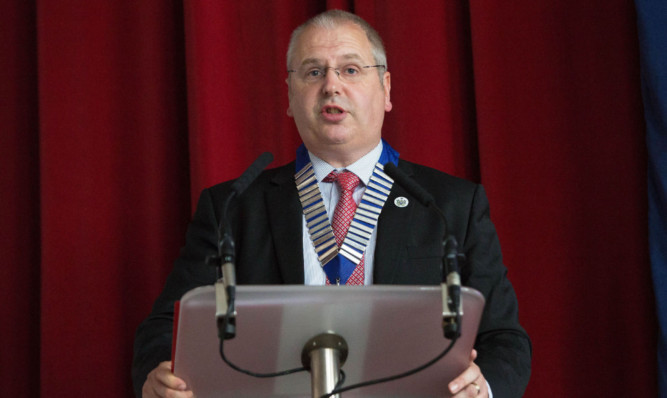Police chiefs are being pushed to breaking point due to crippling budget cuts and constraints, a senior officer has warned.
Chief Superintendent Niven Rennie, president of the Association of Police Superintendents (ASPS), said the cost of maintaining officer numbers at 17,234 across Scotland in the current financial climate had been the health of ASPS members, with many typically working 12 hour days, sometimes up to 12 days in a row.
That has been borne out by the results of the third survey of ASPS members, which has highlighted serious concerns about workload.
“Work/life balance has been sacrificed to ensure the organisation thrives,” Mr Rennie told The Courier.
“The professional goodwill of our membership has been put at risk, and it is not inexhaustible, especially when health and wellbeing are being impacted detrimentally.
“In my mind, this is the greatest risk to the organisation at present. People are tired and they are worn out, but they still keep going.
“We shouldn’t take advantage of these outstanding individuals because we know they will just keep going.
“They will work over 12 hours a day as a norm, they will answer their emails and telephone calls outside these hours, and they will not take their days off or annual leave compliment. Working from the car has become the norm for a great many of the leaders in our service.
“Added to this they frequently do their on-call rotation, they are known to work all night but turn up at their desks the next morning because they want to see a job through or because there is just nobody else there.
“At the weekends, our members turn up in the office for a meeting when they should be recharging their batteries and yet we hear that our numbers may reduce further, from 170 towards 150 members. If that happens, mistakes are going to be made.”
With more than 90% of the police budget spent on staffing, Mr Rennie conceded cuts against a backdrop of ring-fenced officer numbers gave the service “little room to manoeuvre”.
“We can’t retain officer numbers and strip out everything else voluntary redundancy has removed much of the back office support,” he added.
“After all it’s far cheaper to employ a constable rather than a superintendent when numbers have to be maintained.”
In response to Mr Rennie’s concerns, Chief Constable Sir Stephen House has vowed to initiate a review of superintending numbers, their role and the structures they are currently asked to work within.
